
Fausto Alesio Acke, was an Italian-born Swedish gymnast and discus thrower. Born in Rome he was adopted in 1903 by family friends, after his parents died during an epidemic. His adoptive parents were the Swedish Impressionist painter J. A. G. Acke and Eva Acke, the daughter of the Finnish-Swedish author Zacharias Topelius. Acke was raised in Vaxholm. At the 1920 Summer Olympics, he was part of the Swedish team that won the gold medal in the Swedish system event. He later moved to the Hollywood, where he worked in the movie industry, married sculptor Gerdis Sung, and died aged 69.
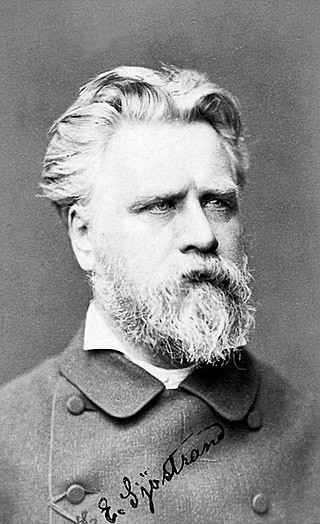
Carl Eneas Sjöstrand was a Swedish sculptor who worked for over 40 years in the Grand Duchy of Finland.

Eva Fredrika Bonnier was a Swedish painter and philanthropist.

Lydia Katarina Wahlström was a Swedish historian, author and feminist. She was one of the founders of the National Association for Women's Suffrage and its chairman in 1909–1911.

Hanna Mathilda Winge, née Tengelin was a Swedish painter and textile artist. She was one of the five founders of the Swedish women's association Nya Idun.
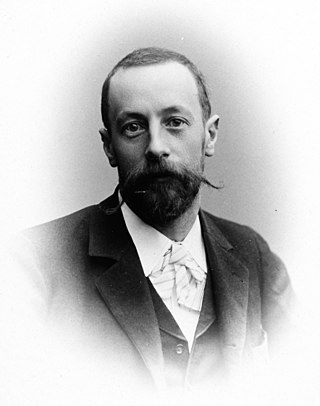
Johan Axel Gustaf Acke, usually called J.A.G. Acke, originally Andersson,, was a Swedish painter, illustrator and sculptor. He was also an amateur architect and designed two villas for himself. One of the first members of the Önningeby artists' colony in Finland.

Toini Mathilda Topelius was a Finland-Swedish journalist and writer for young people.

Anna Sofia Palm de Rosa was a Swedish artist and landscape painter. In the 1890s she became one of Sweden's most popular painters with her watercolours of steamers and sailing ships and scenes of Stockholm. She also painted a memorable picture of a game of cards in Skagen's Brøndums Hotel while she spent a summer with the Skagen Painters. At the age of 36, Anna Palm left Sweden for good, spending the rest of her life in the south of Italy, where she married an infantry officer.

Anna Maria Roos was a Swedish educator, author, theosophist and songwriter.

Hilda Augusta Amanda Kerfstedt, née Hallström, was a Swedish novelist, playwright and translator. She was a popular and noted writer in late 19th and early 20th century Sweden, and participated in the public debate. She was also engaged in the movement for women's rights, and active in the Fredrika Bremer Association and Married Woman's Property Rights Association. As a feminist, she focused on the debate around sexual equality, and was critical to the contemporary sexual double standards for men and women. As such, she was one of the participants in the Nordic sexual morality debate, the public debate in Swedish papers, books and plays, which took place during the 1880s. Kerfstedt was a member of the women's association Nya Idun and one of its first committee members. She was the editor of the feminist paper Dagny, the publication of the Fredrika Bremer Association, in 1888–1891. She was especially noted within the debate on children's literature.

Calla Curman, née Lundström, was a Swedish writer, salon-holder and feminist. She was also the founder of Stångehuvud nature reserve and one of the five founders of the women's association Nya Idun.
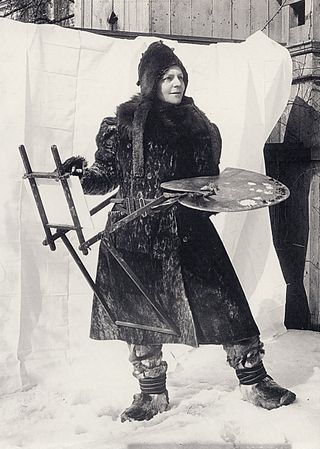
Anna Katarina Boberg, née Scholander, was a Swedish artist married to prominent architect Ferdinand Boberg. Anna Scholander was the daughter of architect Fredrik Wilhelm Scholander and the granddaughter of Axel Nyström. Boberg was a person of many artistic pursuits; initially she worked with ceramics and textiles and besides painting she also worked with set design and writing, for example. She was of an artistic family, but never received any formal training in the arts, and is considered an autodidact. Many of her paintings are of northern Norway, which became Boberg's main focus for many years after a trip there in 1901. These works were not received very well in Sweden, but did much better in Paris. Boberg spent a great deal of time in the area near Lofoten in Norway, where she eventually had a cabin, and she made many of those trips on her own.

Anna Emelia Elisa Wengberg (1865–1936) was a Swedish painter specializing in portraits, who was a member of the Önningeby artists colony on the Finnish island of Åland. Her works are in the collections of the National Museum of Fine Arts in Stockholm and the Helsingborg Museum.

The Önningeby artists' colony was founded in 1886 by Victor Westerholm, a Finnish landscape painter, who had a summer house in the village of Önningeby in Åland in the Baltic Sea. It attracted Finnish and Swedish artists who gathered in the summer to paint landscapes en plein air rather than in their studios. Many of the participating artists were women. In total over 30 artists participated in the colony.

Johanna (Hanna) Sofia Rönnberg was a Finnish artist and writer. She belonged to the generation of women painters in the 1880s who adopted the French Realism style, becoming an active member of the Önningeby artists colony on the island of Åland. As an author, she is remembered mainly for her depictions of Scandinavian artists at the end of the 19th century.
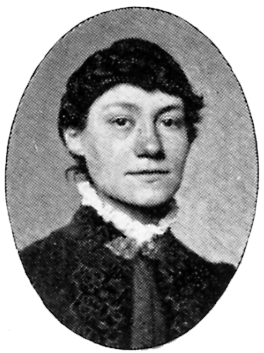
Julia Beck was a Swedish painter and calligrapher.

Anna Charlotta Behle was a Swedish dancer and teacher of rhythmic gymnastics and solfège.

Anna Svenborg Billing (1849–1927) was a Swedish painter who is remembered for her landscapes and her still-lifes. After being introduced to painting by her father Tore Billing, she trained under Swedish artists including Kerstin Cardon and became a student of the French painter Georges Jeannin in Paris. She exhibited there at the Salon in 1884. The collection of Sweden's Nationalmuseum includes works by Billing.
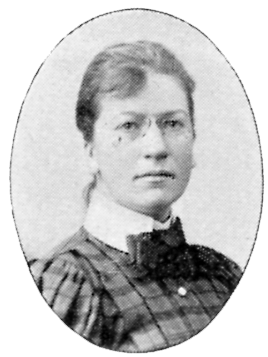
Eva Bagge was a Swedish painter who studied first in Sweden and then made study trips to Rome and Paris. Remembered in particular for her farm scenes and interiors, she did not reach her peak until 1941 when works based on her approach to late 19th-century Realism attracted attention at her solo exhibition in a Stockholm gallery. Such was the interest that they were soon exhibited in Munich and Berlin. Several Swedish art museums, including Stockholm's Nationalmuseum, have works by Bagge in their collections.
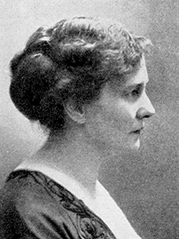
Sigrid Agneta Sofia Elmblad, born Sigrid Agneta Sofia Pettersson, was a Swedish journalist, poet, translator and writer, who translated Der Ring des Nibelungen into Swedish and produced the first Swedish translation of the song of Saint Lucy. she produced her first poems under the pseudonym Toivo. Born in Stockholm to a Swedish father and Finnish mother, she was an early member of the Nya Idun society, rising to be chair between 1918 and 1921. After working as a journalist for the newspaper Dagens Nyheter, she travelled extensively with her husband, the opera singer Johannes Elmblad. While living in Bayreuth, she developed her interest in the music of Richard Wagner, which led her to translate his works into Swedish, including Parsifal in 1917, and the work of other German composers like Robert Schumann. She also wrote fiction for adults and children, as well as biographies for figures like Jenny Lind in 1920. She died in Sweden six years later.




















